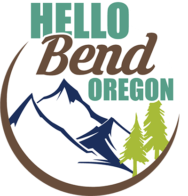My nine month old baby is constantly putting things in his mouth, especially his yummy fingers and toes. Lately, he has spent lots of time rolling around the many amazing Bend parks we frequent. This caused me to wonder what chemicals are used on the grass, and whether or not it is dangerous for children to come in contact with it.
Curious, I contacted Bend Parks & Recreation District’s (BPRD) Park Services and had a good conversation about their lawn treatment. I was told they do not apply broadleaf weed killers for the most part. They do, however, use fertilizers 2-3 times per year, typically in May, July and again in the fall. The fertilizer they use is a common blend called “NPK”, a mix of Nitrogen, Phosphorus, and Potassium. Most blends used here have no phosphorous. The NPK fertilizer used has a “Caution” label, the least toxic chemical category. All fertilizers can be toxic if ingested in large amounts.
BPRD posts signs the day of fertilization warning people to stay off the grass after application. Since these fertilizers are highly water soluble, nightly watering helps to wash off the excess nitrogen from the grass. This is a procedure that’s commonly used and accepted as safe, however BPRD staff cautions against having too much direct contact with grass that’s been recently fertilized. If you are headed to one of the many Bend parks this summer, be sure to keep a towel or blanket stashed in your car. It is recommended to sit on a blanket or towel if the park has just been treated.
Park Services staff has offered to communicate with concerned parents about when and where they will be fertilizing. While their website does not provide information on their fertilization practices and schedule, you can contact them at 541-389-7275 with any additional questions.
A huge thank you to guest blogger Diana Stevens for researching this topic and writing this post. Diana is a stay-at-home mom from Portland who has been Living the Bend Life since November 2014.


